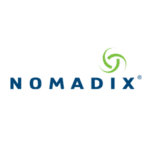Hotel management isn’t rocket science; it’s blocking, tackling and caring. It can’t always be distilled into a formulaic approach. Too often management teams lose sight of their primary objective: to deliver excellent service to their associates who in turn deliver excellent service to their guests and to the community at large.
It begins with selecting the best, letting them know they are appreciated, training them from day one and indoctrinating them into the company culture. If the hotel leadership team adheres to this philosophy, they will prosper within their market. I’ve never believed in a ‘cookie cutter’ approach. Each area in which you conduct business is different. Whether it is due to economic challenges, market conditions or a shallow labor pool, you must always be adamant about your broader goals while allowing for improvisation day-to-day and week-to-week.
Several years ago, our operations team was tasked with taking over the management of a well-branded, select-service hotel. Located in a small town with no major corporate base, the hotel was built off a freeway exit that promised a future market which did not develop as expected. Making matters worse, the hotel’s competitive set was located at the town’s primary exit surrounded by known restaurants and gas stations positioned to draw travelers off the interstate. The hotel was a victim of a failed entertainment development and it was hemorrhaging cash trying to stay afloat.
Despite the challenge of the location, all was not lost. Within two years of taking over the property, we greatly increased revenues, realigned expenses, improved associate engagement and integrated the property into the local community. It was a classic case of swooping in with the defibrillators, making swift changes to bring the hotel up to speed and then readjusting according to the specific conditions of the locale.
Why had the prior team struggled for two years to ramp-up this hotel? Immediately, we recognized a few obvious shortcomings:
- The property had been managed remotely without a real understanding of the local market.
- Expenses had remained bloated as revenues failed to materialize.
- Demoralized staff alienated guests and the local community.
- The sales staff was that of a busy urban hotel where the additional payroll would have been better utilized for such tactics as highway coupon books, billboard advertising and visitor center displays.
Keeping in mind the above short comings while planning our strategy for a long overdue property ramp-up, we developed a four-pronged approach designed to stabilize the economics, strengthen the team and energize the community.
1. Revenue recovery
The first priority was to stabilize the revenue. When the team stepped in, the property had failed to ramp up – evident by the annual occupancy of 28%. Given the property’s location and the lack of a strong local business community, the sales team on staff took a page from our old motor coach days.
We focused our sales effort on the interstate visitor centers. We worked closely with visitor center employees, set up displays and increased the visibility of our hotel. Within a short time, occupancies continued to improve and we could then begin to focus on rate management. We worked directly with the local community to gauge future demand so we could maximize rate in high yield periods. The combined impact of these efforts drove the RevPAR index from 62% to 109% in 18 months and increased the occupancy percentage by 79%. Overall revenues increased by $1.3M or 89%.
2. Expense alignment
Equally critical to the revenue rescue, we had to stop the bleeding. The hotel was losing almost $200,000 annually when we stepped in. The team needed to reallocate expenses to make sure that we were investing operating dollars most effectively, which is no simple task. While many of the operating expenses were already in-line, the onsite sales office was staffed for a large-scale urban effort that did not exist.
Thus, we reorganized the sales team, reducing two FTEs, and then reinvested the savings into interstate coupons books and a billboard advertising campaign. The net impact of this change was to improve cost allocation while also drastically improving the overall sales and marketing efforts. We were able to increase operating profits by over 400%, representing a 15-point increase in margin in less than two years.
3. Associate engagement
As you might imagine, associate satisfaction had suffered as the hotel’s fortunes waned. As one of our strategic pillars, we consider associate satisfaction to be a key metric of success. To invigorate the onsite staff, a new General Manager was hired and tasked to revitalize the corporate culture. He utilized resources to improve the property’s training program and worked with internal teams to ensure that associates had a voice in the hotel’s operations – a voice that was actually heard!
As a result of this refocus, associate engagement and retention increased, smiles emerged and ideas to improve operations flowed. Satisfied associates also led to improved overall guest satisfaction scores.
4. Community alignment
Lastly, our team instigated a program for the hotel leadership team to establish new relationships with key corporate entities and the regional hospital. We also worked closely with the municipal government and community leaders to provide a real cooperative business development effort. This quickly morphed into an endeavor whereby the community found benefit from the property and rewarded it with both lodging and F&B business.
Like everyone else at my parent firm, I not only take pride in our management philosophy, but also in our culture. My energy is always devoted to recruiting and selecting the best possible team members. And our organization is structured foremost to support and train this team, with our systems designed to reinforce their success.
This philosophy allows us to run each managed hotel as an individual operation with perfect alignment between broad goals and specific improvisation. Local teams set the vision depending upon the given needs of a situation and they are fully supported by a passionate corporate culture with deep operating knowledge.
About the author
 Wayne West III is the Chief Operating Officer of Newport Hospitality Group, Inc., guiding the company’s portfolio to ensure each hotel performs at its full potential. Over his 35 years in the industry, Wayne has operated, supervised and owned assets in IHG, Marriott and Hilton systems as well as non-branded properties. He has been a part of the Owners Council with Marriott and served as a Committee Member with IHG on their Food and Beverage Committee, Operations Committee and Standards Committee. Wayne attended East Carolina University and has been named a certified hotel administrator by the American Hotel & lodging Association. You can reach Wayne via email at waynew@nhghotels.com.
Wayne West III is the Chief Operating Officer of Newport Hospitality Group, Inc., guiding the company’s portfolio to ensure each hotel performs at its full potential. Over his 35 years in the industry, Wayne has operated, supervised and owned assets in IHG, Marriott and Hilton systems as well as non-branded properties. He has been a part of the Owners Council with Marriott and served as a Committee Member with IHG on their Food and Beverage Committee, Operations Committee and Standards Committee. Wayne attended East Carolina University and has been named a certified hotel administrator by the American Hotel & lodging Association. You can reach Wayne via email at waynew@nhghotels.com.


















